
Block 37: Puutarhalohko
The block information contains basic information about the block and events during the growing season, observations, and yield data.
Block 37
Puutarhalohko
Block basic information
Area: 1.62 hectares
Soil type: richly loamy sandy moraine (rmHtMr)
Clearly shaped, partly sloping to the north block. The light soil type is suitable for many plants as well as experimental activities. Not suitable for potatoes, as there is potato blight in the soil and a high phosphorus level.
Restoration works: In the fall of 2020, the clearing of the ditch along Runkomäentie and leveling of the field edge embankment.
Crop rotation
2024 Grazing pasture
2023 Silage pasture
2022 Mixed crop (grains + grass seed)
Research and experiments
2020 Spring wheat variety and fertilization trial
2021 Heirloom potatoes
Cultivation measures
Cultivation measures
Pasture grass
Cultivation measures
Silage grass 14.6.2023 Harvesting of silage into bales, yield 871.48 kg DM/ha
Cultivation measures
Mixed crops (Oats, Wheat)
17.5.2022 Plowing
19.5.2022 Harrowing
19.5.2022 Seeding, Oats, Matty, Wheat, Lion and Pearl
30.5.2022 Seeding, grass seed, Naturcom, Retuhiiliseos
26.8.2022 Harvesting, yield 2541 kg/ha
Cultivation measures
Broad beans, Kontu
13-14.05.2021 Cultivation twice, penetrating goose foot blade
14.05.2021 Sowing: Broad beans, Kontu 290 kg/ha
13.05.2021 Harvest, yield 1118 kg/ha
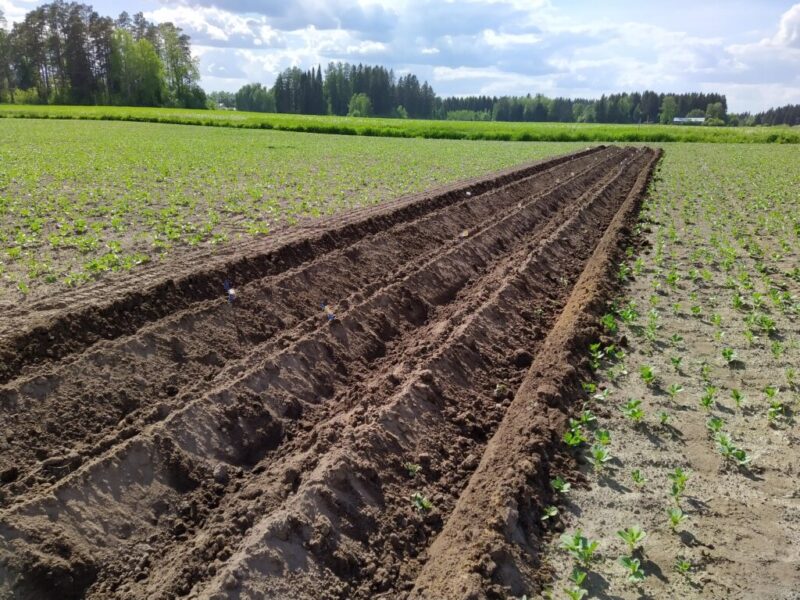
Cultivation measures
Barley, Elmeri
27.4.2020 Levelling cultivation
5.5.2020 Cultivation, penetrating the goosefoot blade
6.5.2020 Fertilization, Ecolan Agra Organic 13-0-0 organic fertilizer, 400 kg/ha, for the field of the grain variety trial
14.5.2020 Sowing, Barley, Elmeri 254 kg/ha
15.9.2020 Harvest, Yield 1825 kg/ha
7.10.2020 Plowing
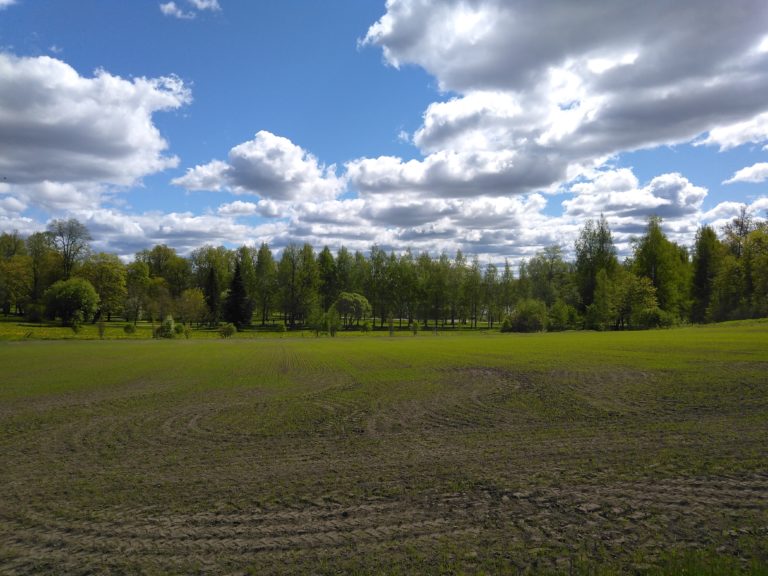
Research and experiments
In 2020, there was a spring grain variety and fertilization trial at the garden plot. Click here for results and the comparison of varieties.
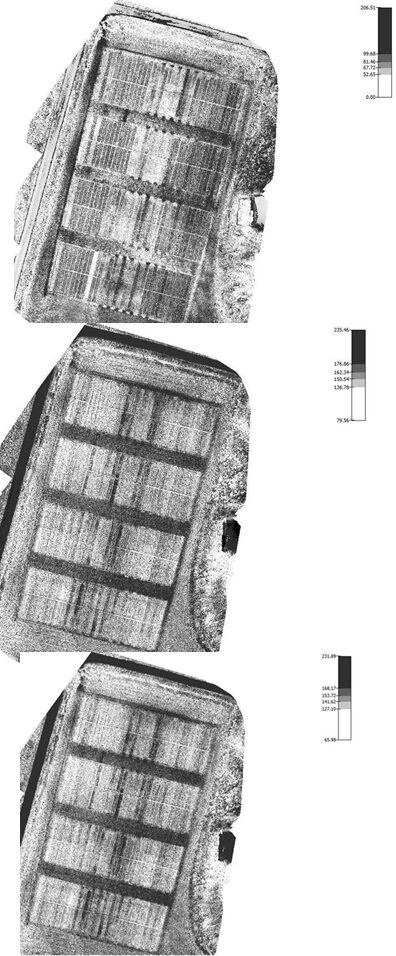
Cultivation measures
Silage grass
6. 2019 Harvest, yield 3000 kg per hectare
23.7.2019 Harvest, yield 2100 kg per hectare
4.9.2019 Harvest, yield 2300 kg per hectare
28.10.2019 Plowing
Cultivation measures
Oats Matty and grass seed mixture
15.5.2018 Spring tine harrowing
15.5.2018 Sowing of oat Matty, 210 kg/ha
14.6.2018 Weed harrowing
14.6.2018 Sowing of grass seed mixture Retu for improved forage, 25 kg/ha. The mixture contained timothy 40%, reed canarygrass Retu/Karolina 25%, bluegrass SW Nexus/Live 20%, Italian ryegrass Meroa 5%, red clover Saija/SW Yngve 5%, alsike clover Frida/Aurora 3%, white clover Jögeva4 2%.
13.9.2018 Harvest 2022 kg/ha
Block monitoring
17.5.2018
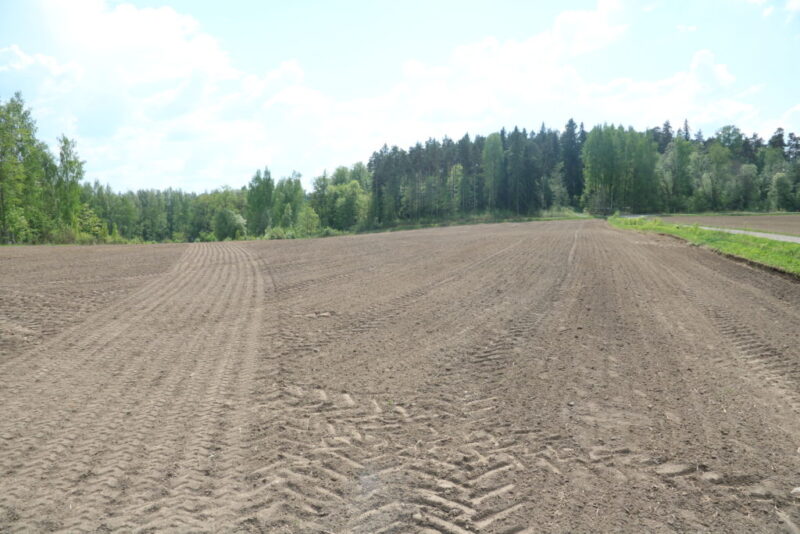
24.5.2018
The settling has started off at a good pace.
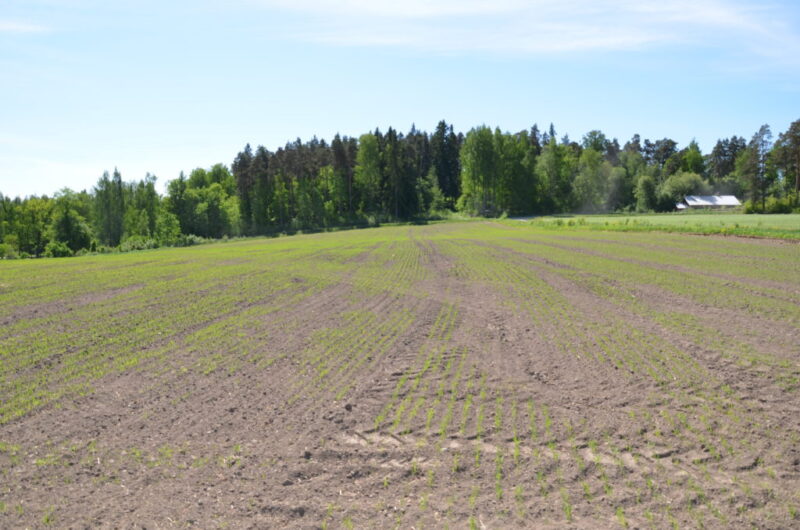
1.6.2018
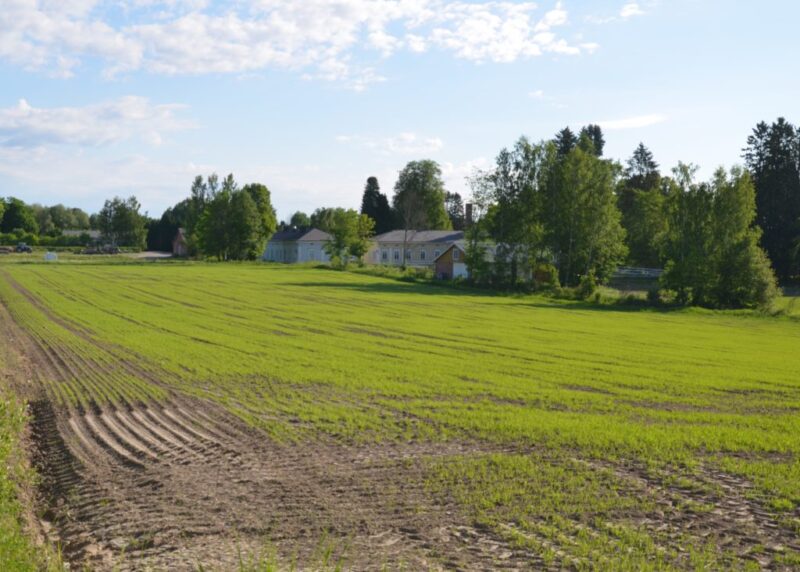
8.6.2018
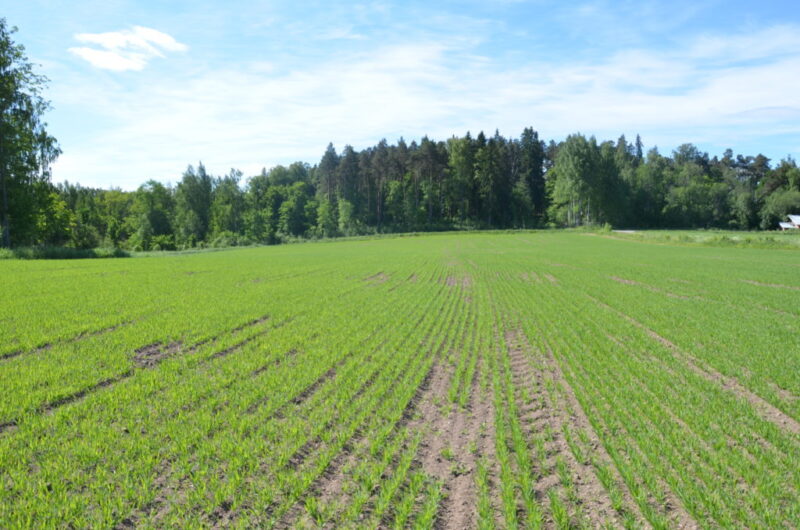
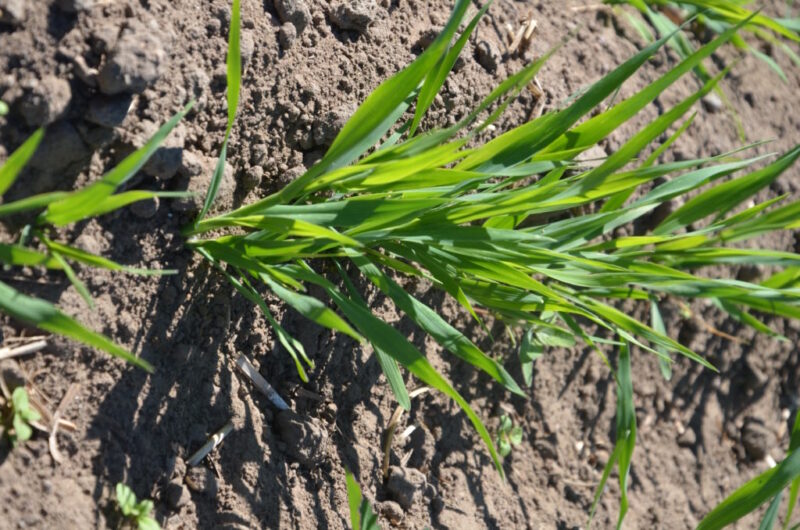
12.6.2018
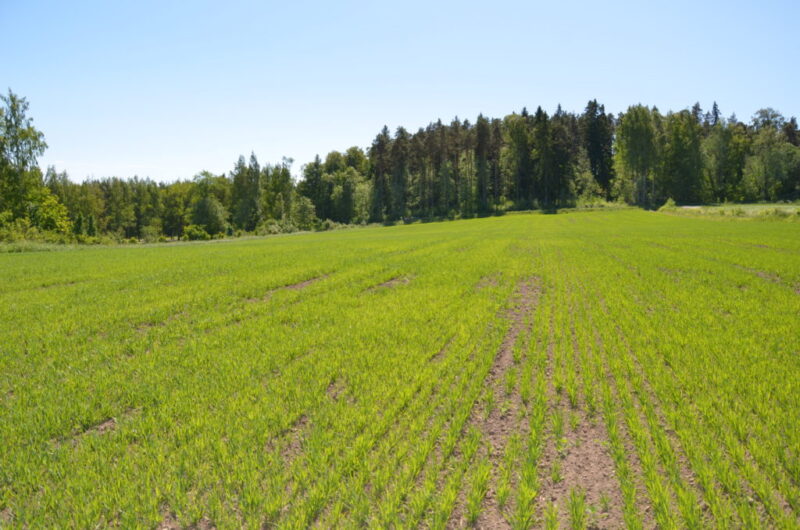
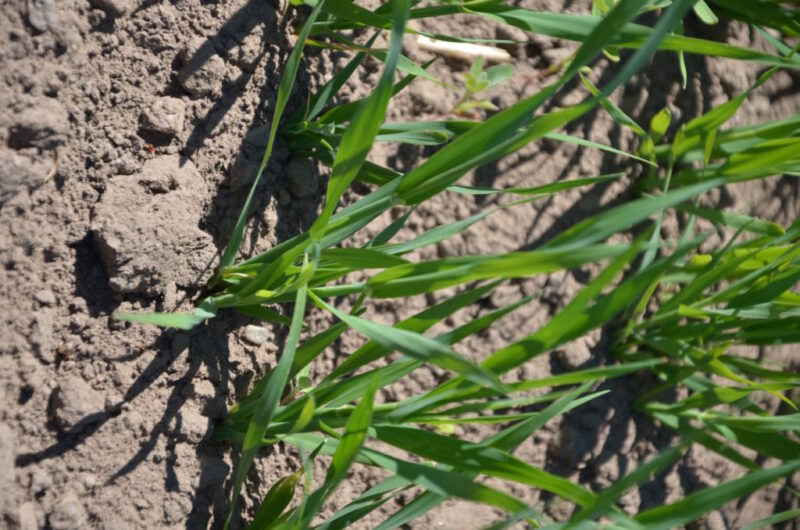
20.6.2018
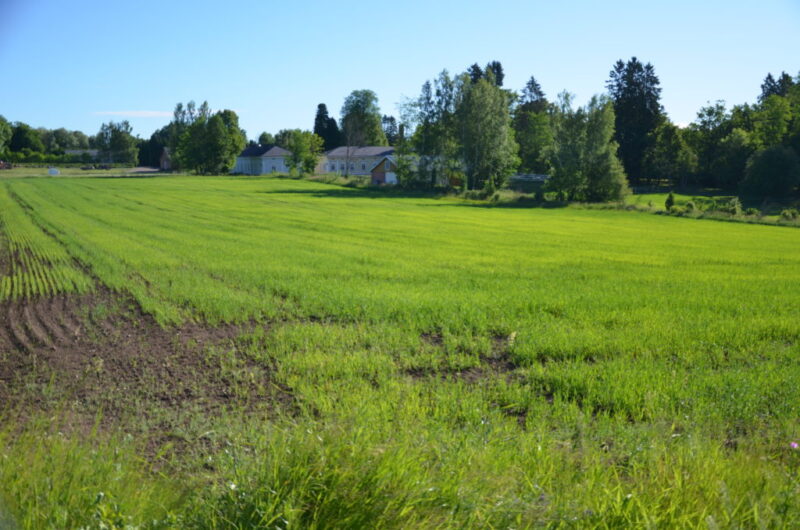
28.6.2018
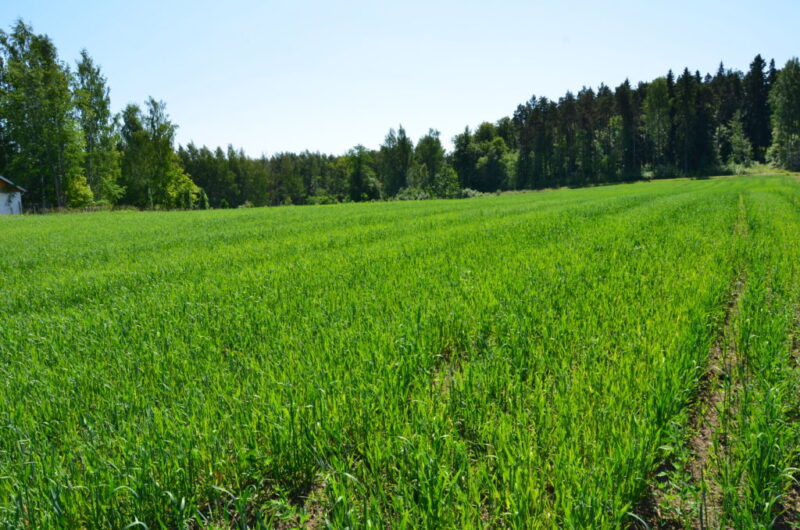
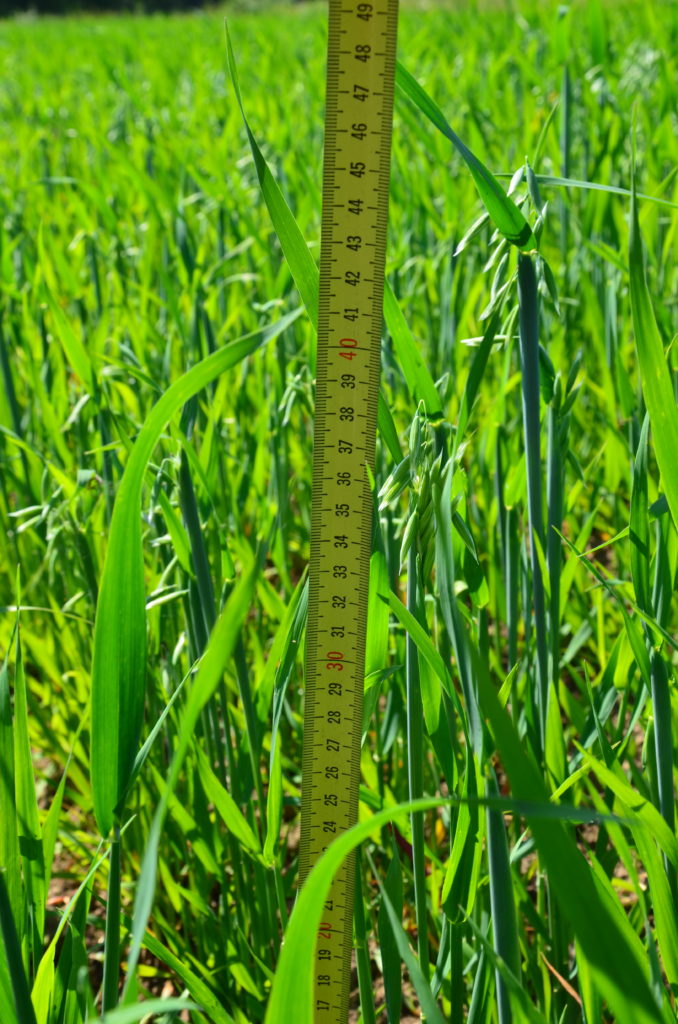
2.8.2018
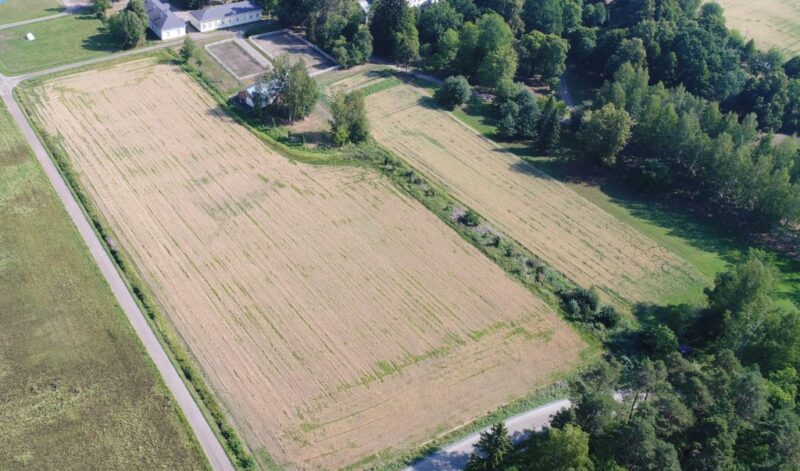
Cultivation measures
The plot has served as a training plot for machinery in the fall; last worked with a disc plow.
Barley Elmeri
12.5.2017 Direct sowing fertilization and barley Elmeri, 229kg/ha, YaraBela Finnish saltpeter 400 kg/ha (108-0-4-16 kg/ha)
16.5.2017 Rolling
6.6.2017 Weed control, Ariane S 2 l/ha
29.6.2017 Disease control and stem regulation: Moddus M 0.25 l/ha, Acanto 0.25 l/ha, Proline 250 EC 0.25 l/ha
5.9.2017 Harvest, threshing 5300 kg/ha, Nutrients removed in the harvest (92.1-18.7-27.3 kg/ha)
20.9. Plowing
Apply 16 kg/ha of nitrogen, 19 kg/ha of phosphorus, and 23 kg/ha of potassium.
Cultivation observations
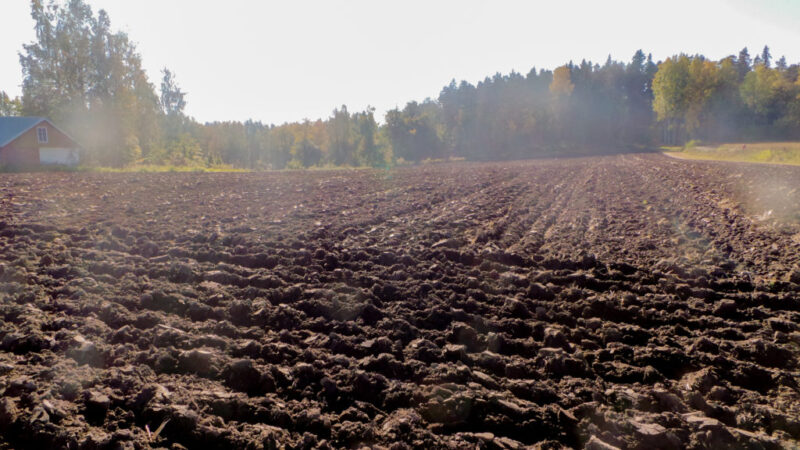
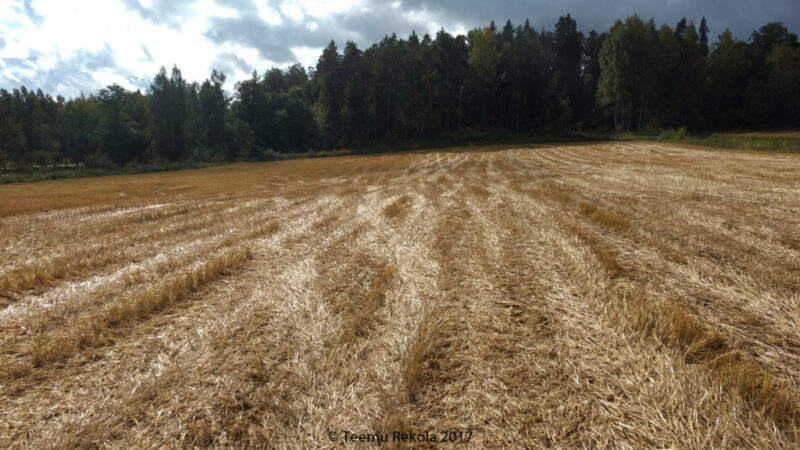
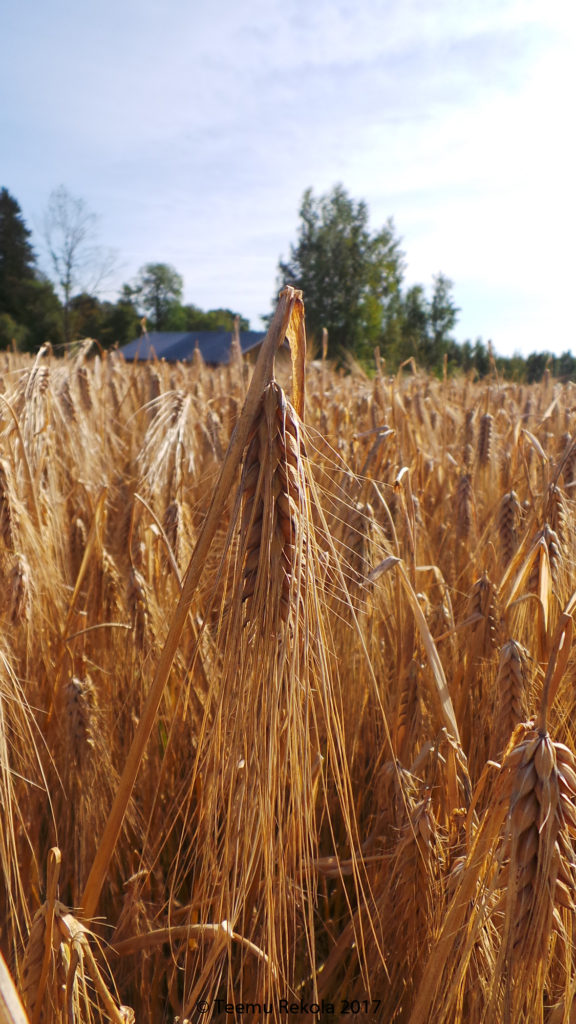
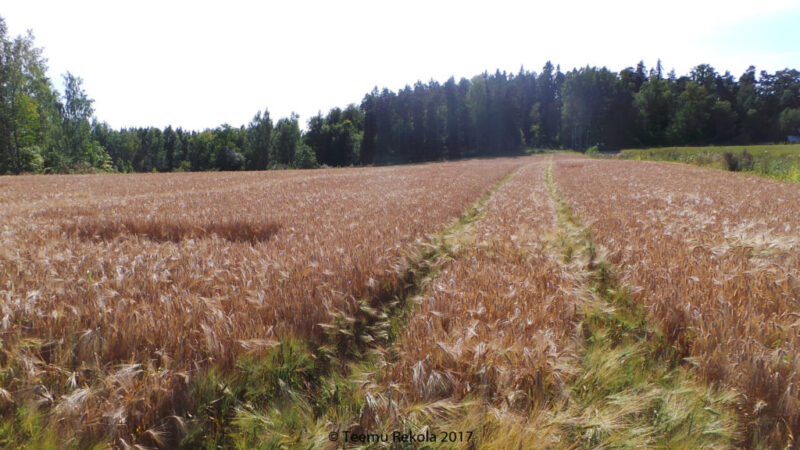
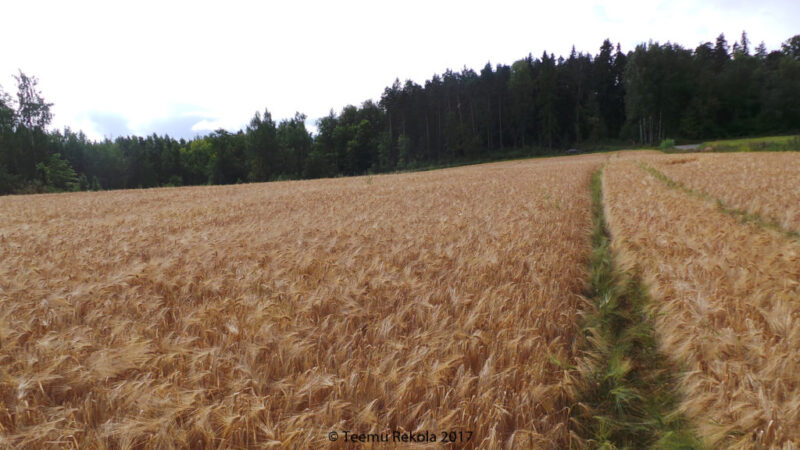
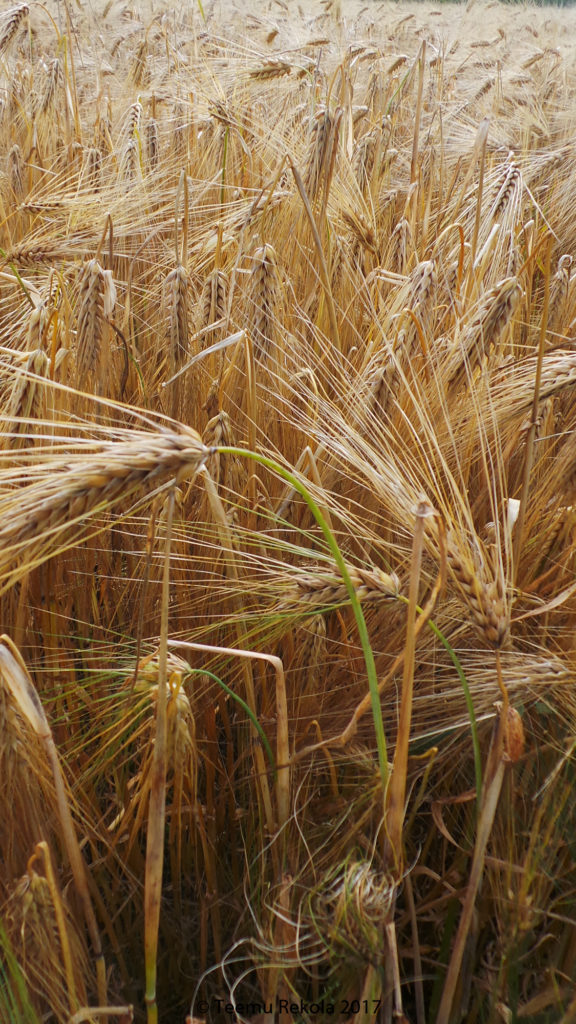
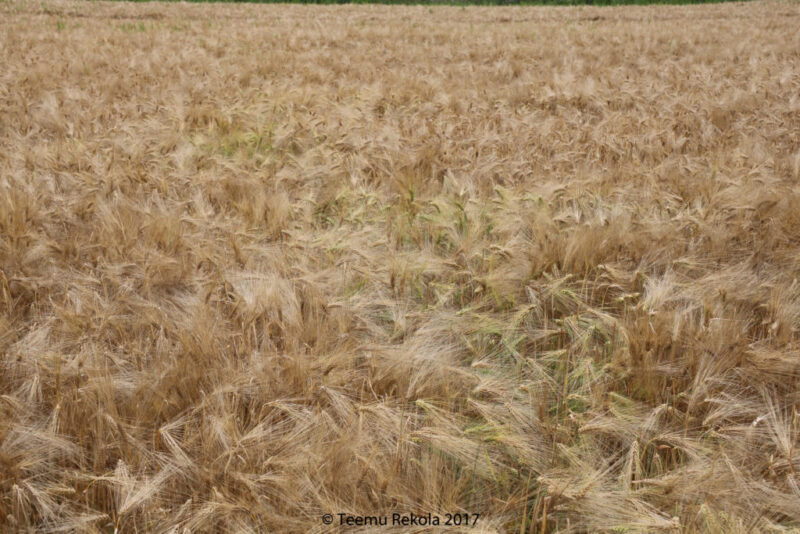
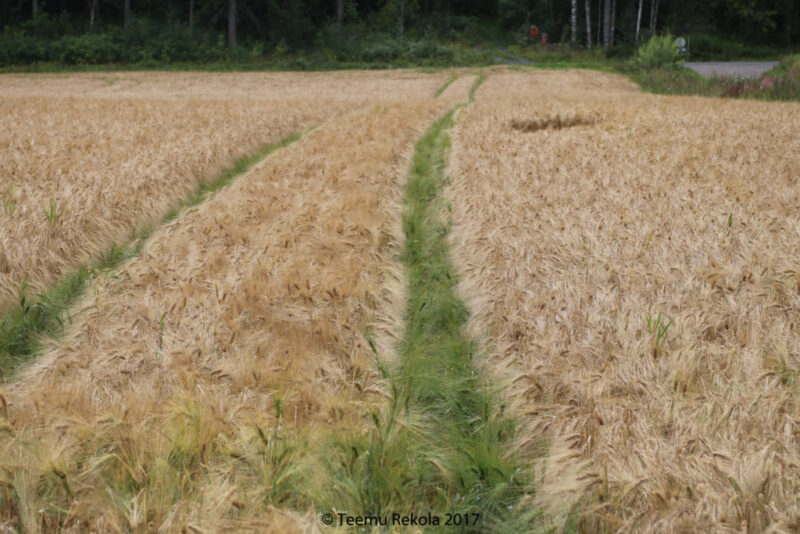
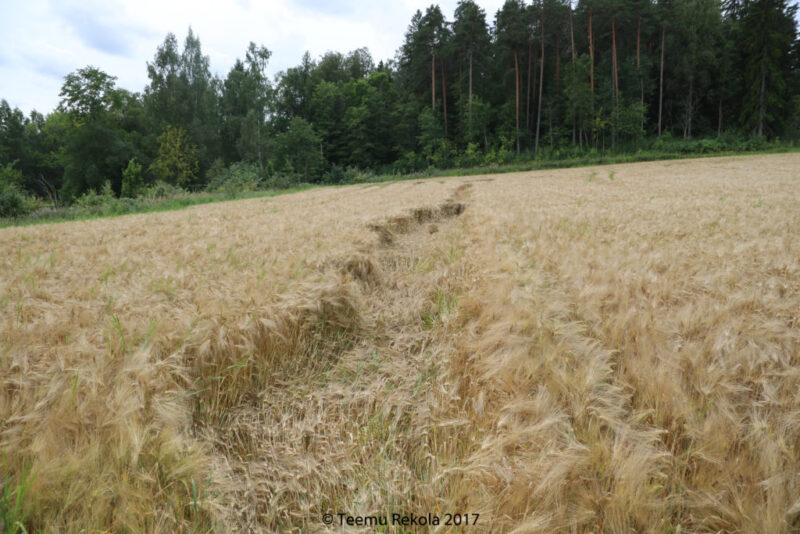
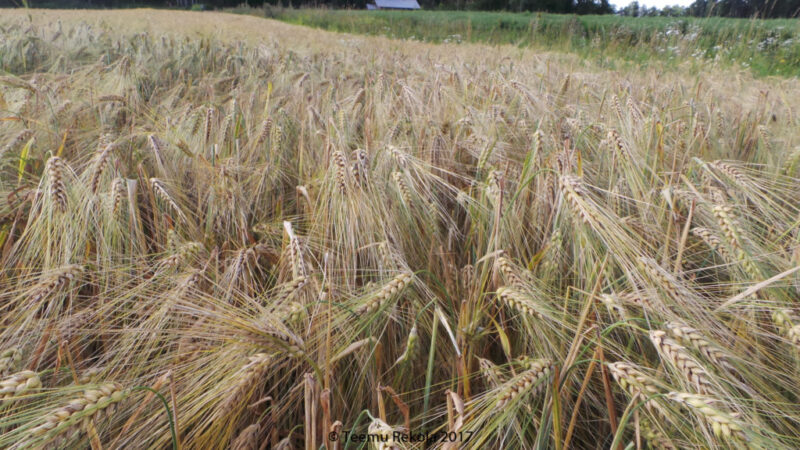
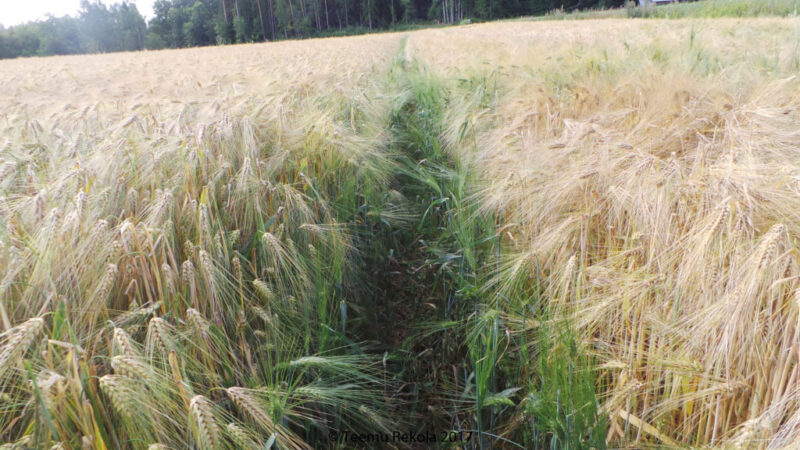
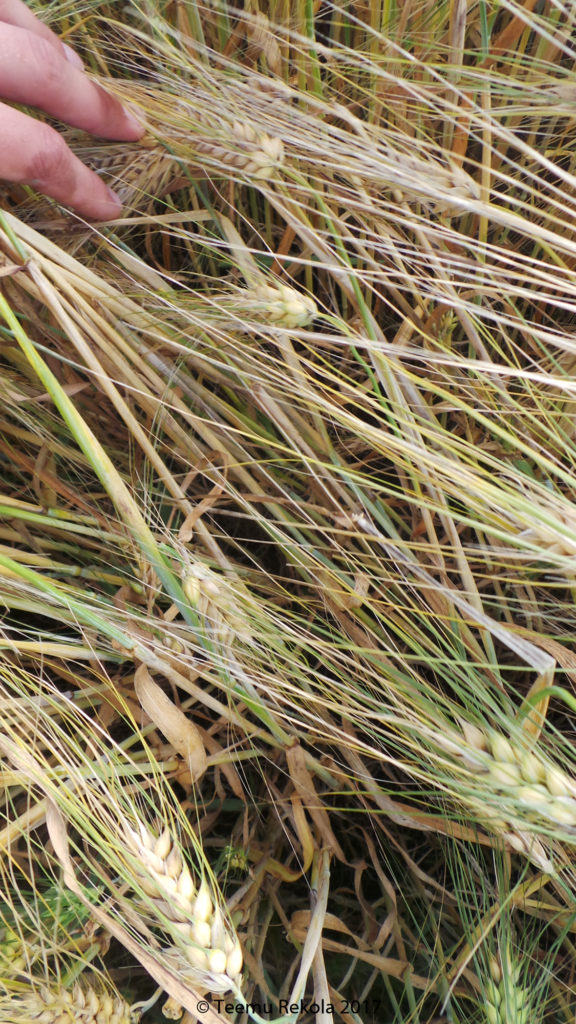
9.8.2017 Despite the rain, barley has remained standing, with a growth rate of 83-85.
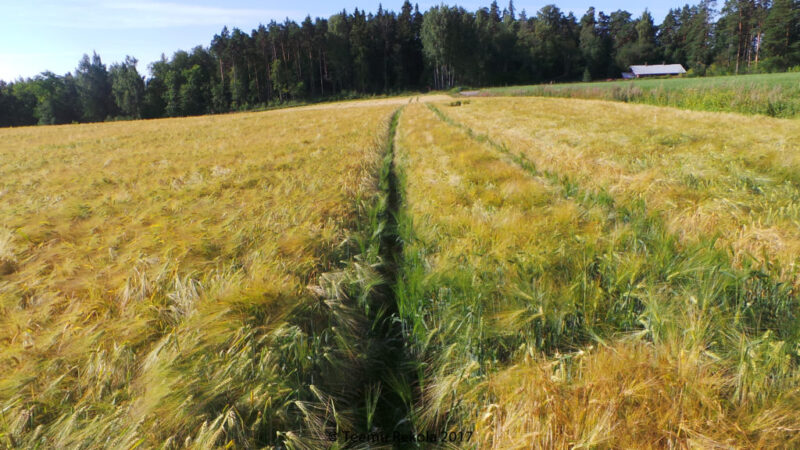
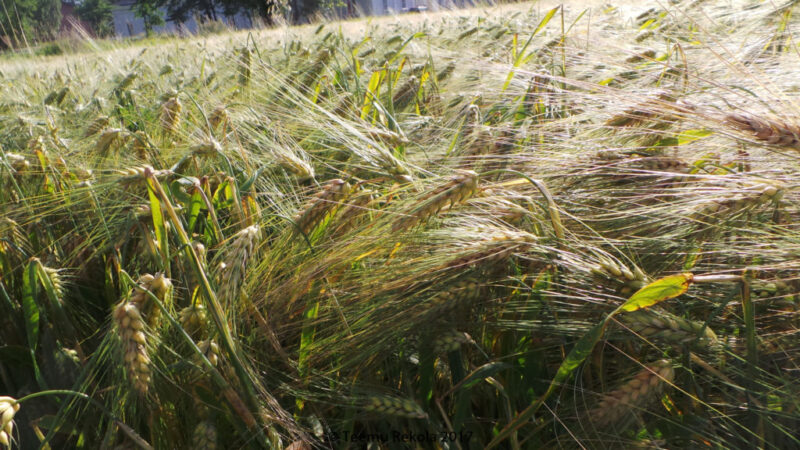
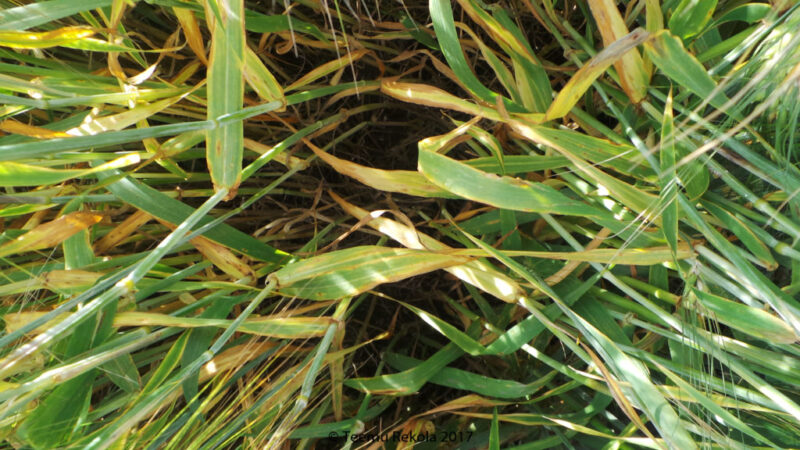
On average, there were 450 ears per square, and 30 grains per ear, especially the side branches have short ears. With these conditions, the estimated yield is about 5500 kilograms per hectare, with a growth rate of 71-75.
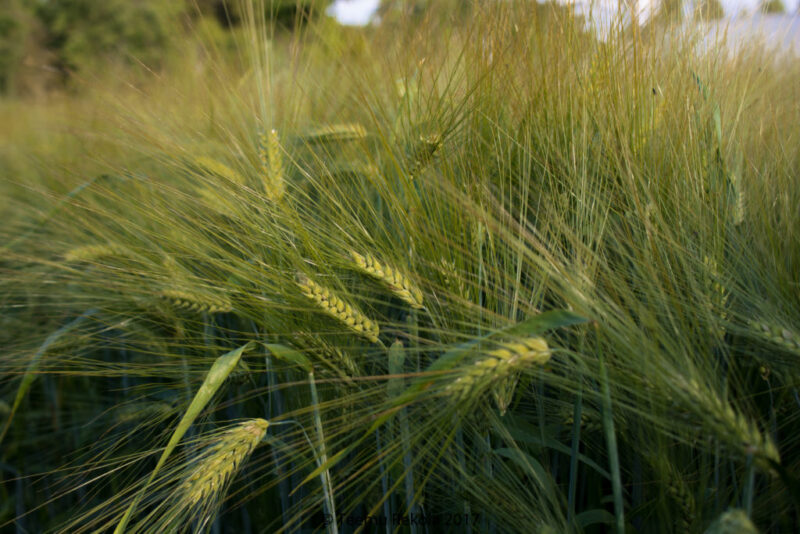
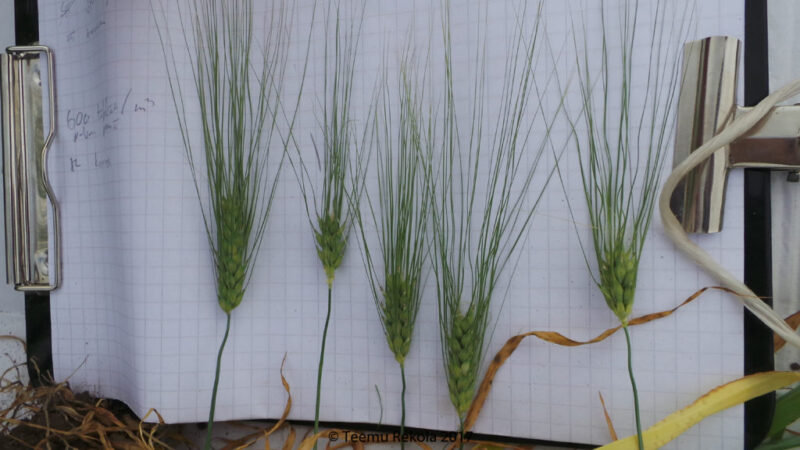
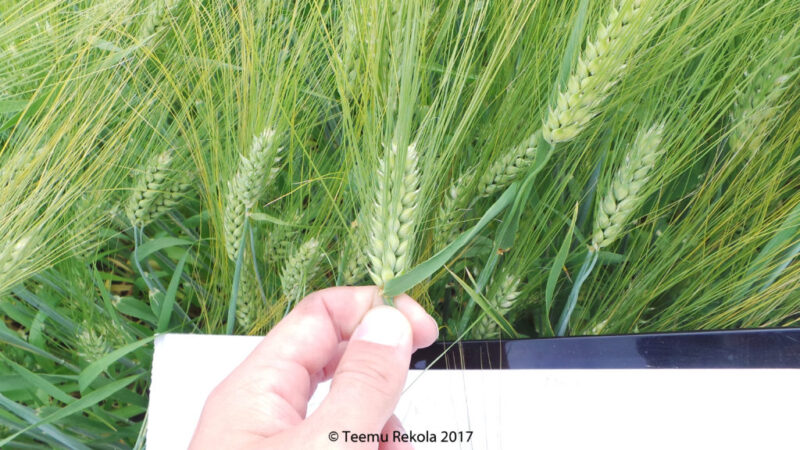
The flowering of the ear has ended, growth rate is 69.
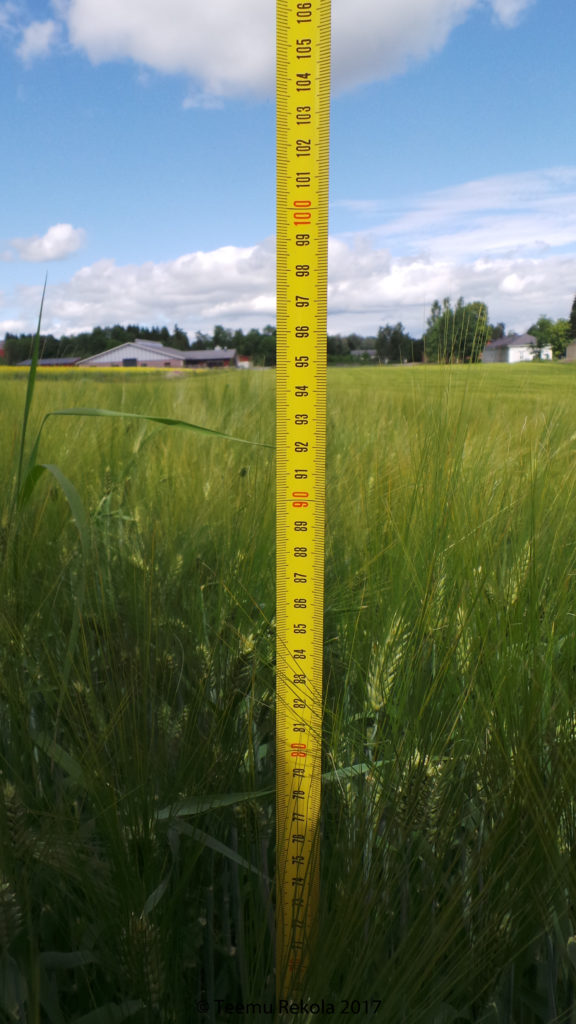
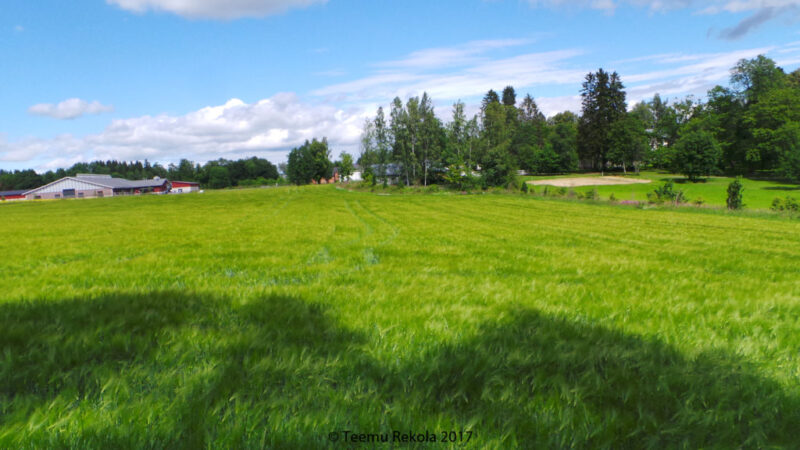
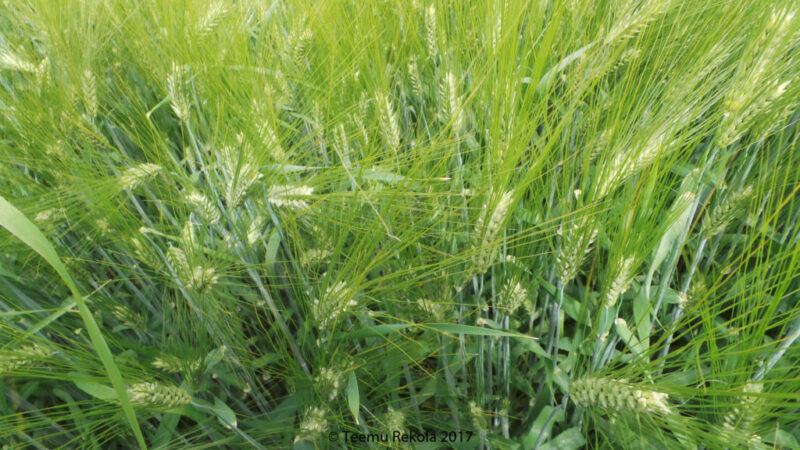
The blooming of the ear has begun, stamens are visible and the growth rate is 61-65.
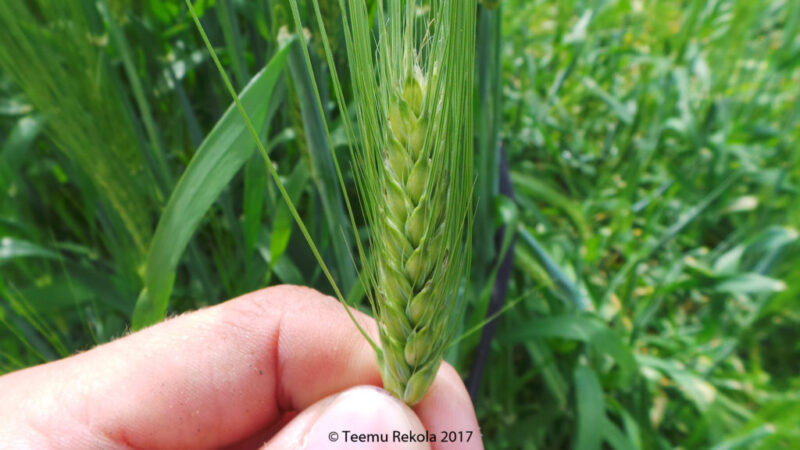
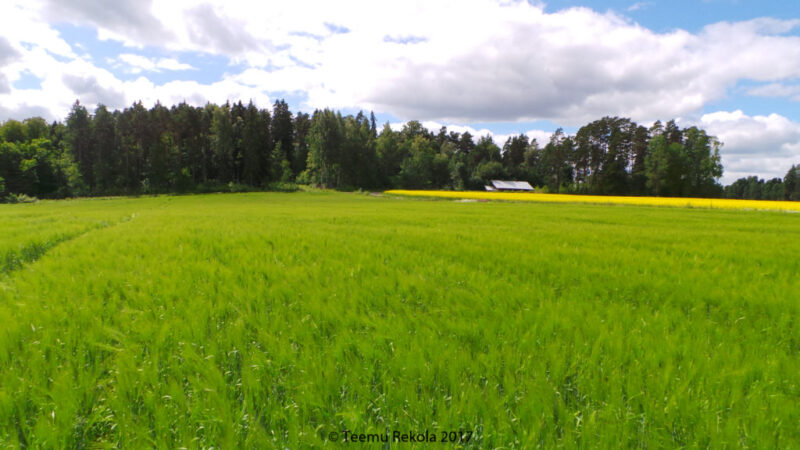
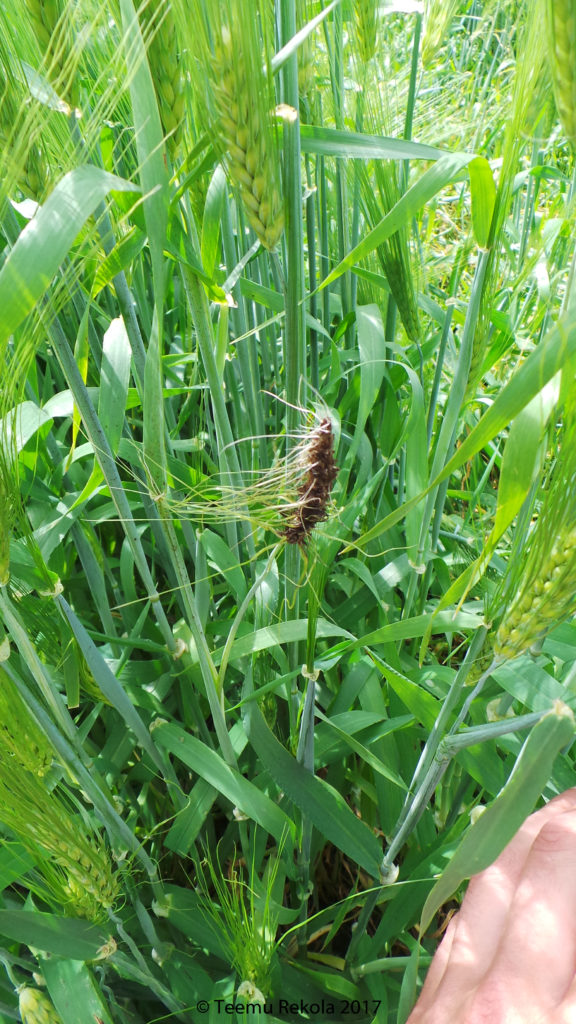
7.7.2017 The barley is mostly in the ear, growth stage 57 (70% of the ears are out).
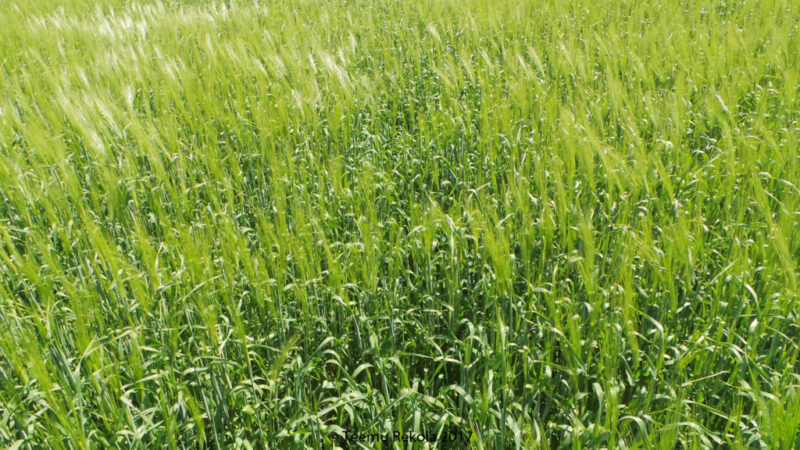
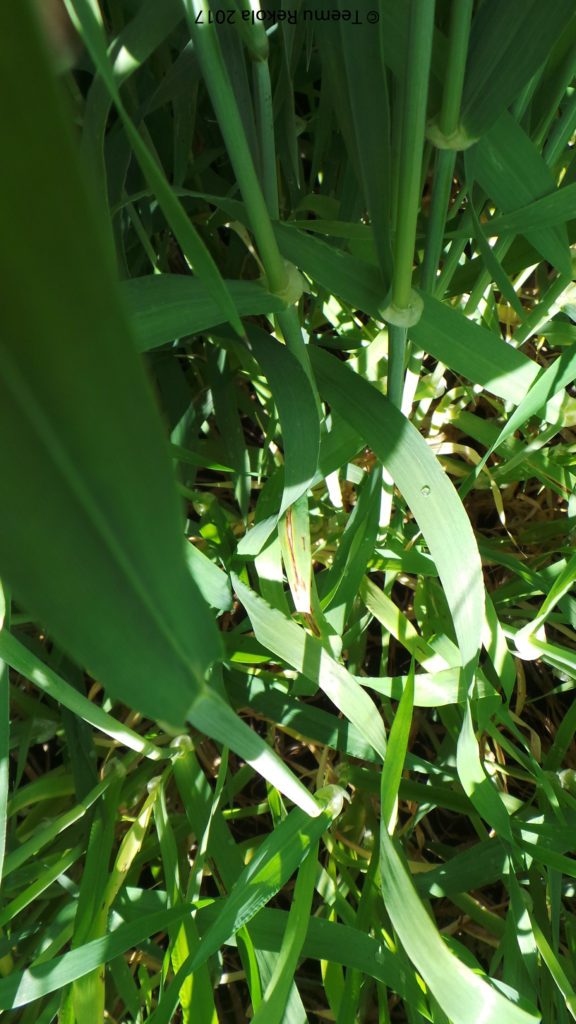
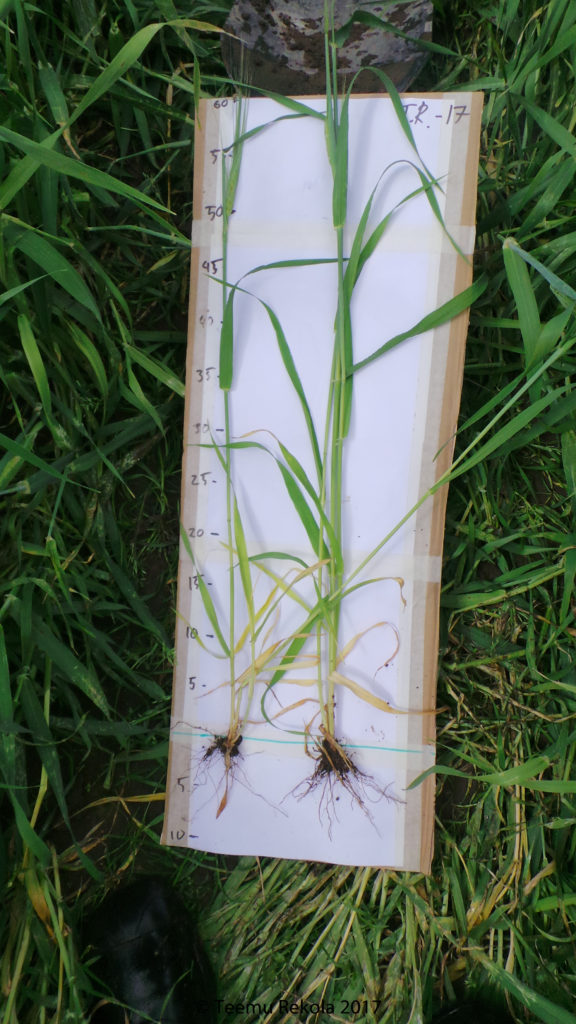
29.9.2017
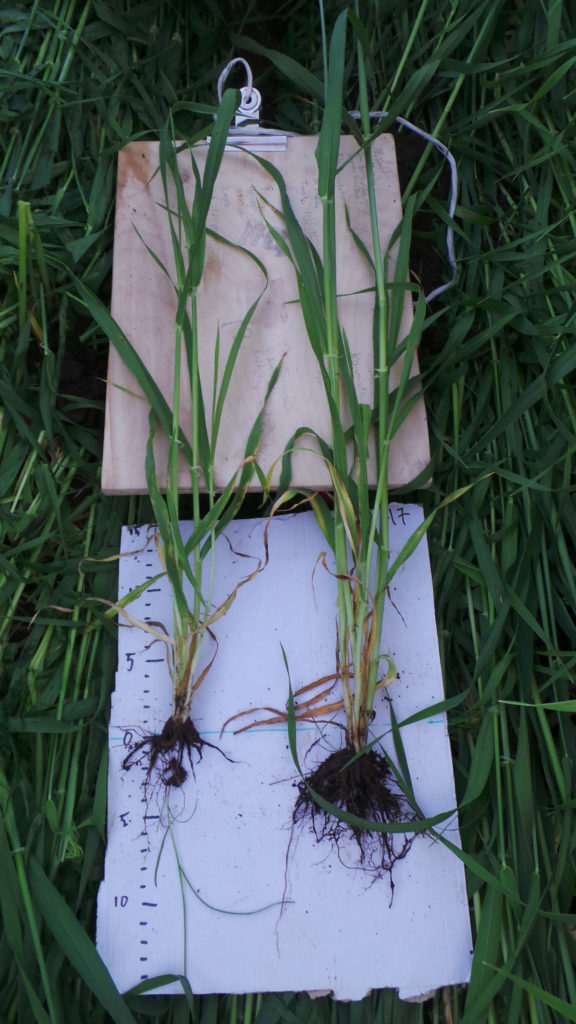
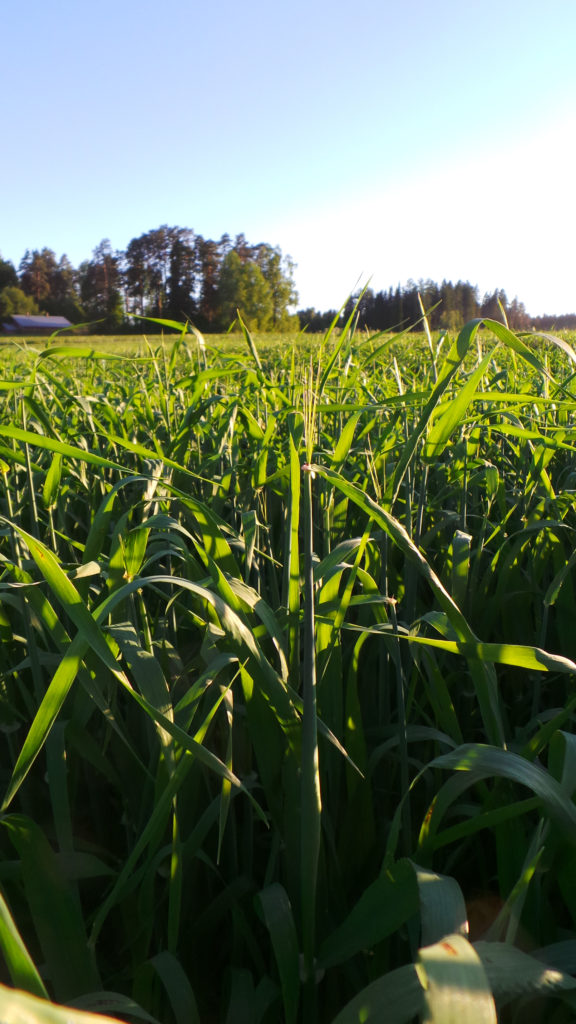
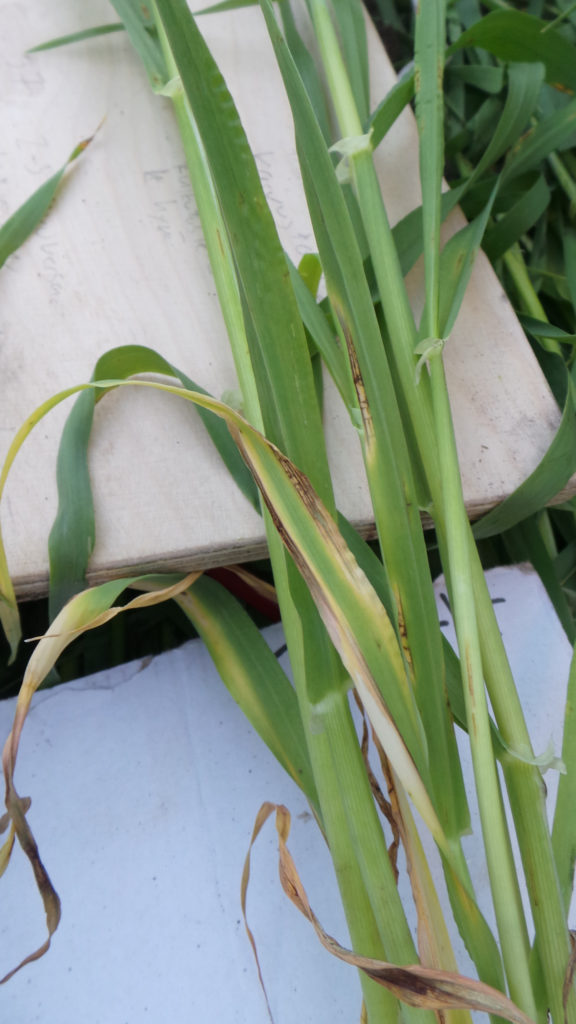
22.06.2017 The growth has remained steady and clean. The growth stage is the stem growth phase.
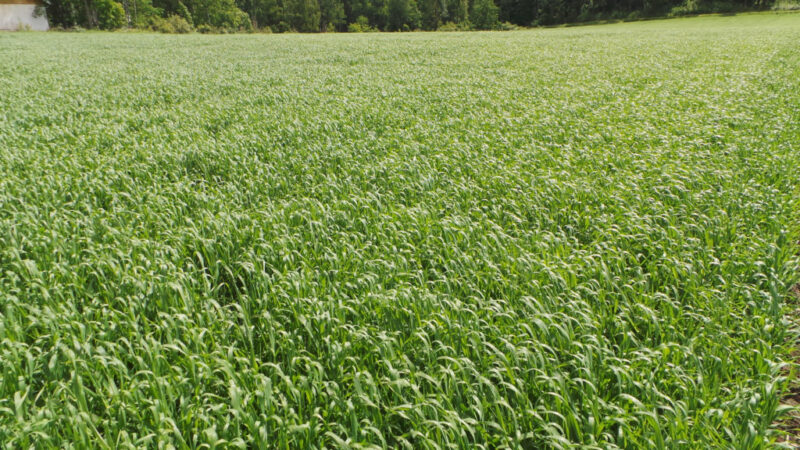
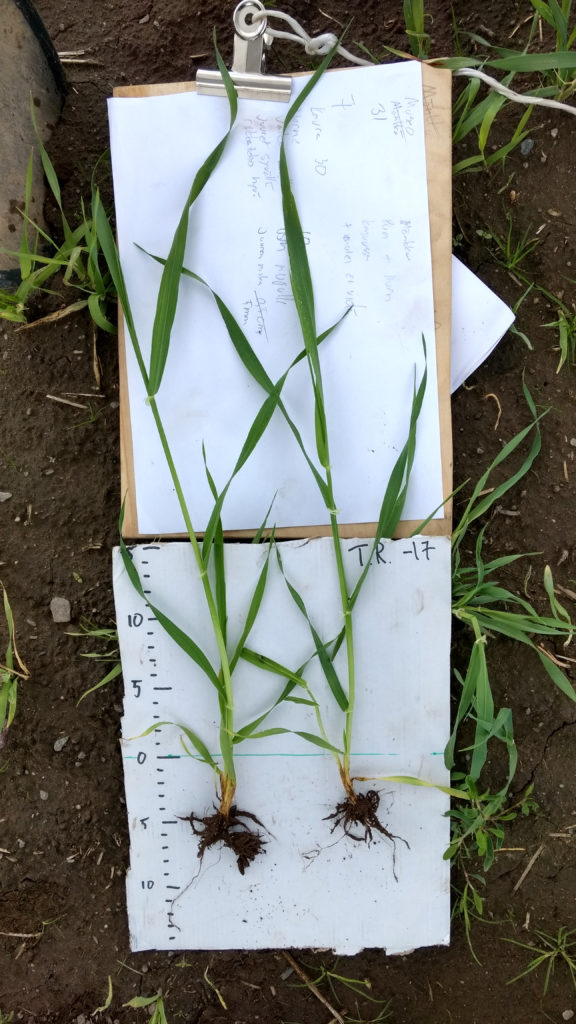
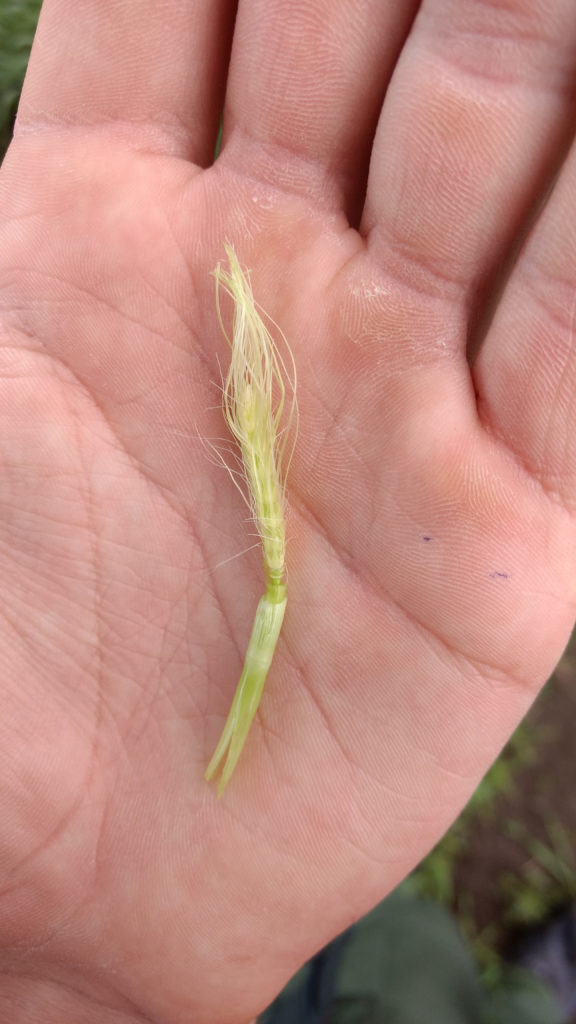
12.6.2017
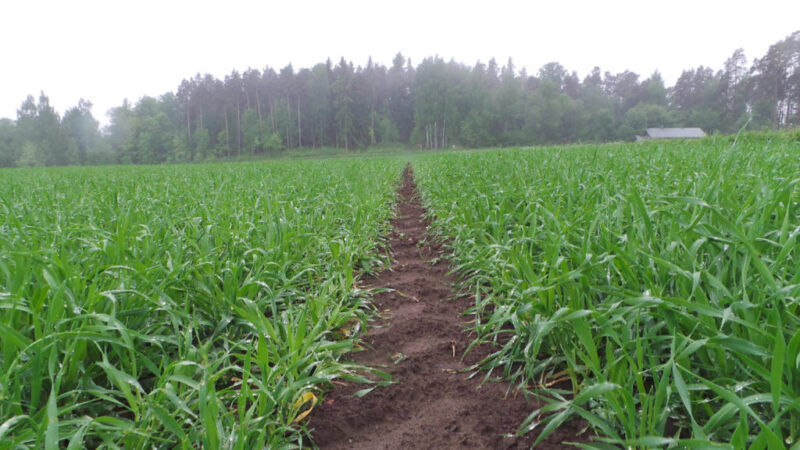
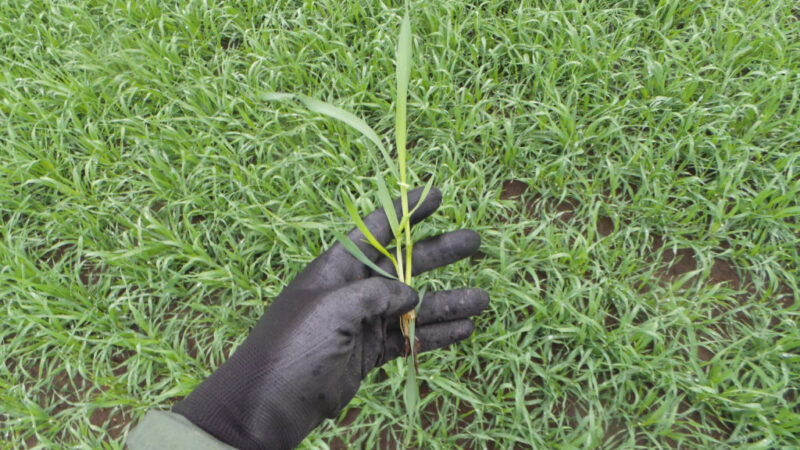
6.6.2017
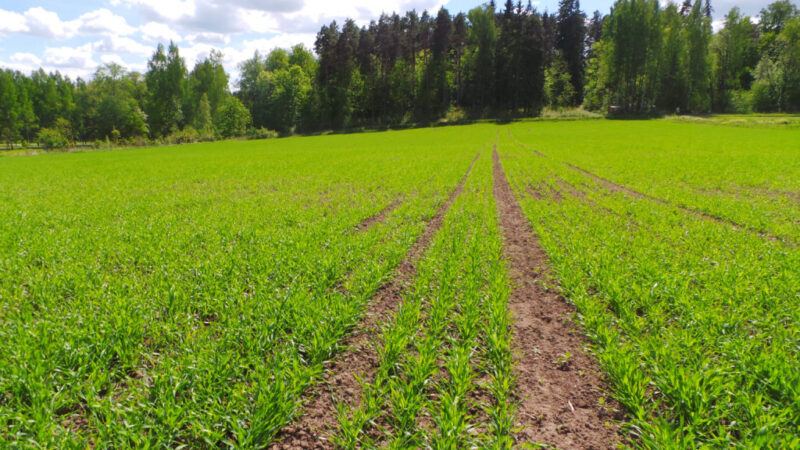
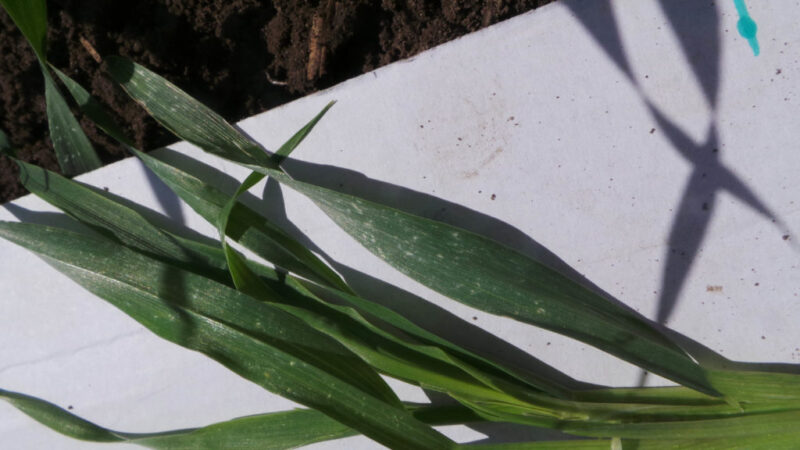
The variation seen in the field perpendicular to the sowing direction is likely due to the previous autumn’s tillage practices, as well as erosion that occurred during the winter.
30.5.2017 Barley continues to grow, with a growth stage of two, with two or three leaves open, at 12-13 Zadoks.
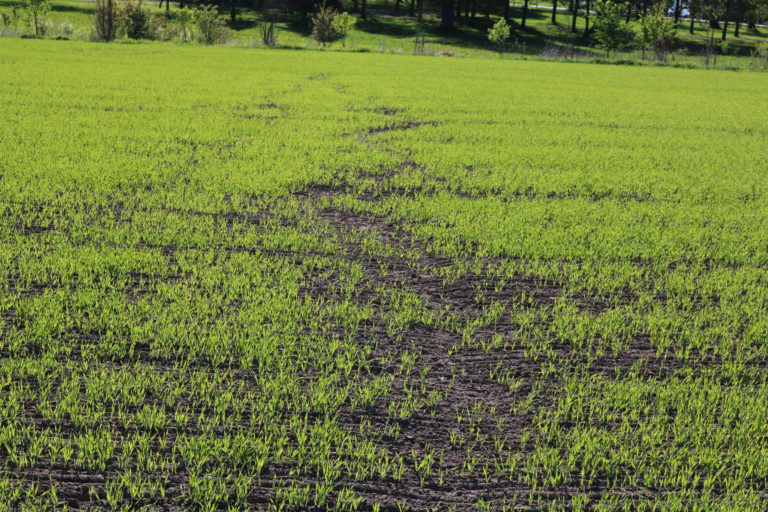
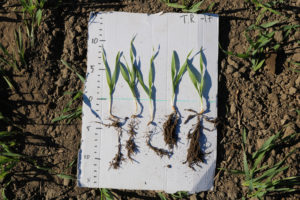
30.5.2017 captured ortho aerial image, pixel size on the ground 1.9cm. The image also reveals erosion marks from the winter. It should be noted that the fields do not appear very green from above, even though they may appear green when viewed from the road.
23.5. 2017 The field has germinated quite evenly! The growth stage is 11 according to the Zadoks scale.
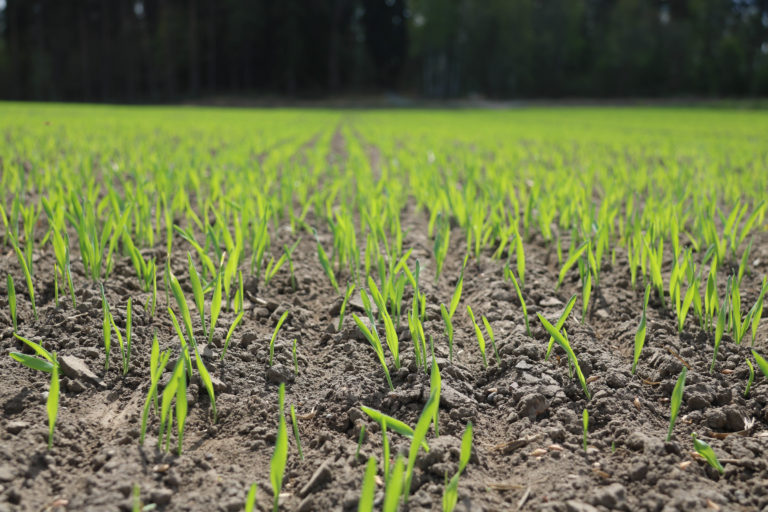
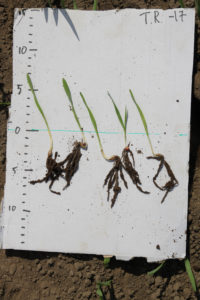
Cultivation measures
Oats, Matty
Soil analysis 26.11.2021:
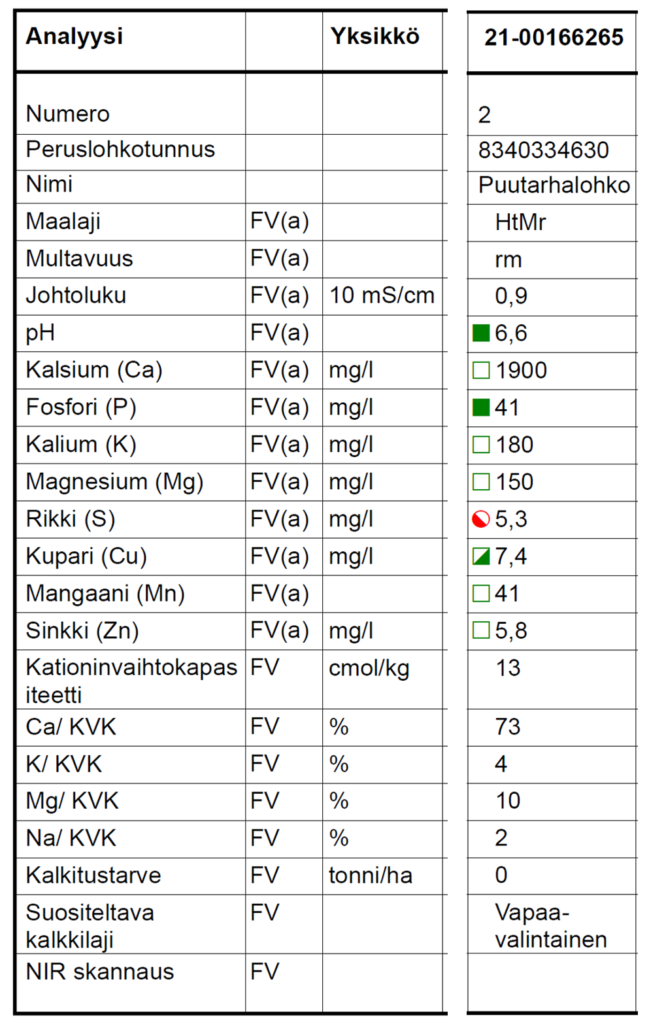
Garden plot sampling line 2:
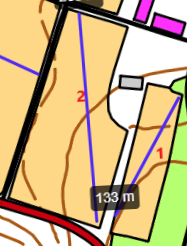
Soil analysis 2.5.2018:
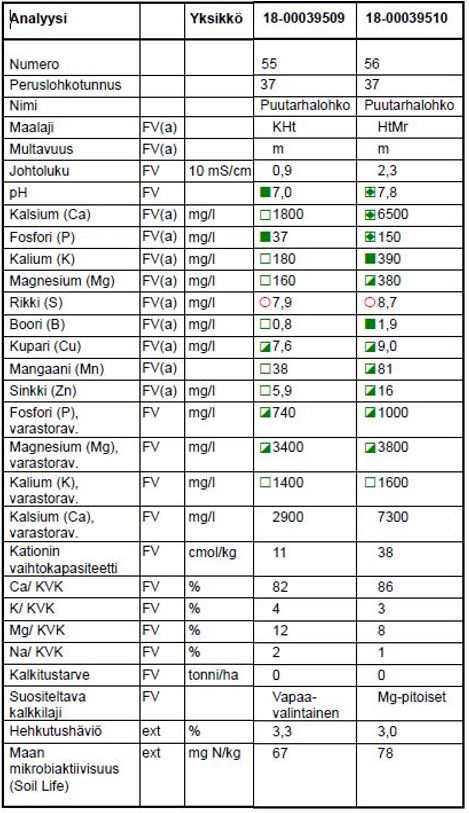
Soil Sample 2014:
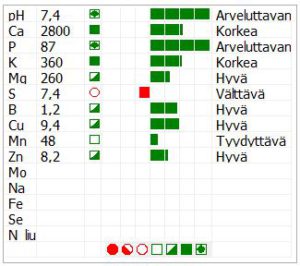
2024 Meadow pasture
2023 Silage pasture
2022 Mixed crop (grains + grass seed)
2021 Broad bean, Kontu
2020 Barley, Elmeri
2019 Silage pasture
2018 Oats, Matty (cover crop)
2017 Barley, Elmeri
2016 Oats, Matty
2015 Barley, Tiril
2014 Spring wheat, Anniina
2013 Green fallow
2012 Spring wheat, Anniina
2011 Barley, NFC Tipple
2010 Spring wheat, Kruunu